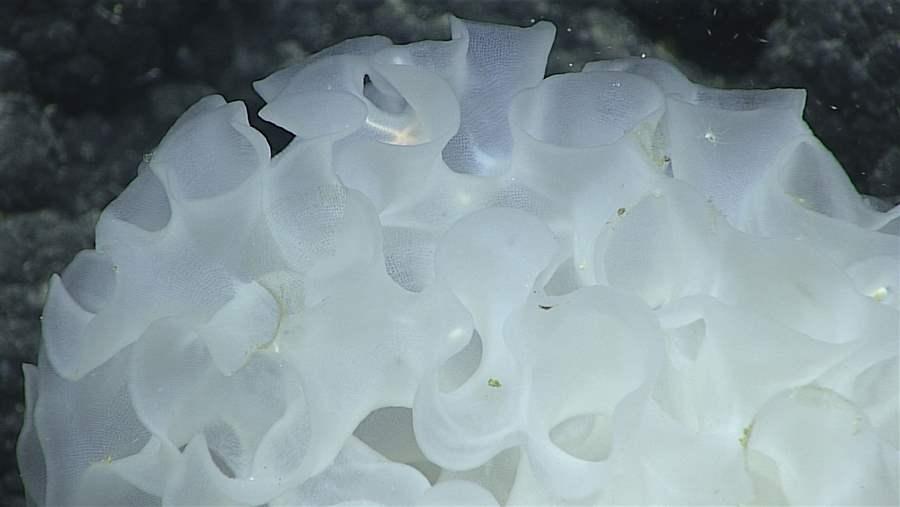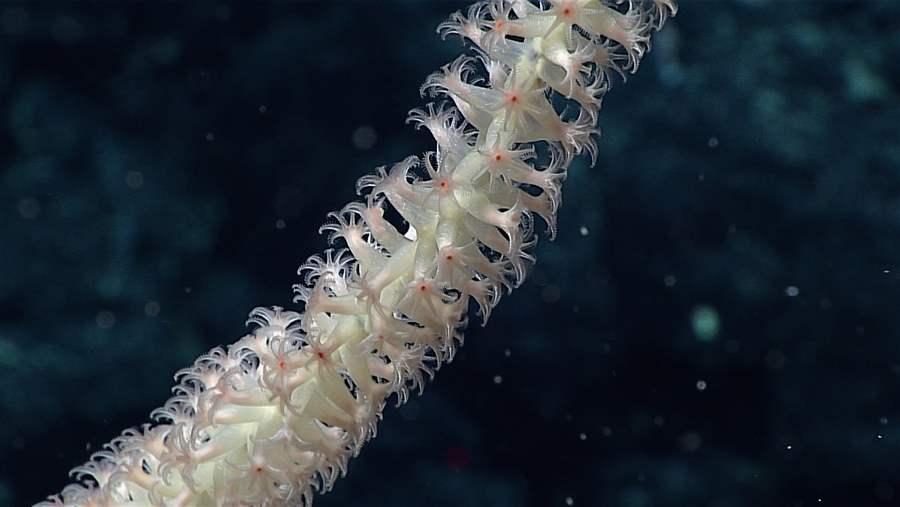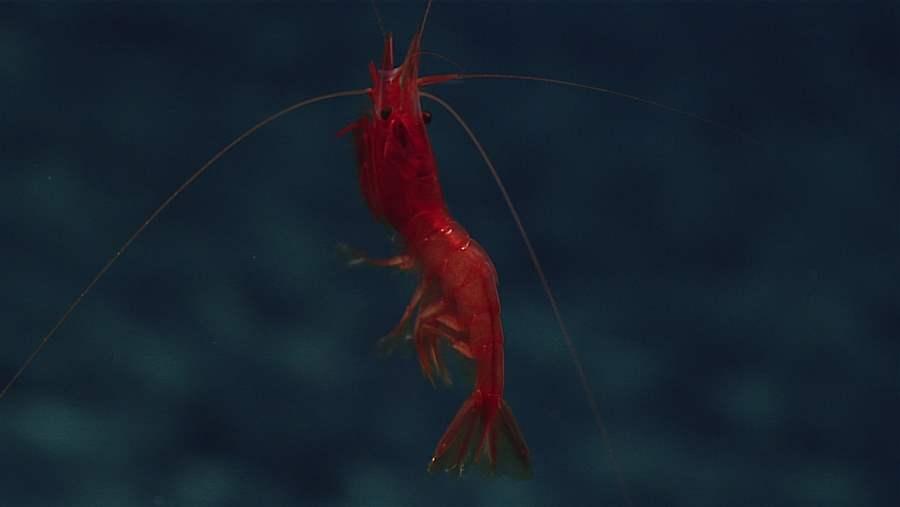Leading Marine Scientists Call On President Obama to Expand Hawaii Marine Reserve
Enlarging Papahānaumokuākea would protect biodiversity and help Hawaiians preserve traditions and cultural ties to the remote area
 © NOAA Office of Ocean Exploration and Research
© NOAA Office of Ocean Exploration and ResearchThis glass sponge is among the diverse array of species that scientists have found in the deep sea just outside the current boundary of Papahānumokuākea Marine National Monument.
On June 24, scientists attending the International Coral Reef Symposium (ICRS) in Honolulu released a letter to President Barack Obama emphasizing the international marine science community’s unified support for expanding the Papahānaumokuākea Marine National Monument in the Northwestern Hawaiian Islands.
The reserve, established in 2006 by President George W. Bush, covers 140,000 square miles (363,000 square kilometers). U.S. Senator Brian Schatz (D-HI) recently asked President Obama to expand the monument to include an additional 442,000 square miles (1.14 million square kilometers), which would make it the world’s largest marine protected area.
The scientists’ letter, with more than 1,500 signatures, coincides with the release of a new scientific report, Pu’uhonua: A Place of Sanctuary, which details the significant biological and cultural evidence arguing for the expansion of Papahānaumokuākea.
 © NOAA Office of Ocean Exploration and Research
© NOAA Office of Ocean Exploration and ResearchThe seamounts just outside the current boundary of Papahānumokuākea host a variety of corals, including this bamboo coral.
The report was authored by 12 leading scientists, including Sylvia Earle, National Geographic explorer in residence; Callum Roberts, a marine conservation biologist at the University of York, England; Rashid Sumalia, a global fisheries expert at the University of British Columbia Fisheries Centre; Doug McCauley, a marine biology professor at the University of California, Santa Barbara; and Robert Richmond, director of the Kewalo Marine Laboratory at the University of Hawaii and the convener of the ICRS.
In a session at the ICRS symposium, scientists, conservationists, and Native Hawaiians noted that the deep sea around the Northwestern Hawaiian Islands contains the oldest living organism on the planet, black coral, which scientists say is 4,265 years old. They also emphasized that some of the earliest people to settle Hawaii landed on the northwestern islets and that many locals favor expanded protection to help them carry on the centuries-old tradition of voyaging.
 © NOAA Office of Ocean Exploration and Research
© NOAA Office of Ocean Exploration and ResearchA deep-sea shrimp swims around a seamount just outside Papahānumokuākea Marine National Monument.
Papahānaumokuākea harbors rich biodiversity and is regarded in Hawaiian culture as a place of honor, the root of native ancestral connections to the gods, and where spirits return after death. Hawaiians feel a deep spiritual connection to the area’s flora and fauna, including sharks, seabirds, and whales. The monument now protects atolls and shallower reefs.
According to the science report, the proposed expansion would protect 110 seamounts (underwater mountains) that are likely home to undiscovered species, as well as guyots (flat-topped seamounts), coral reefs, and pelagic areas, which are key migration, spawning, nurturing, and foraging areas for whales, sharks, seals, seabirds, and turtles.
The expansion would eliminate or reduce the impacts of present and future extractive activities, increase the protected area’s resiliency to climate change, boost ecosystem health, and protect historically and culturally important areas for Hawaiians, the United States, and the world.
Angelo O’Connor Villagomez is an officer with The Pew Charitable Trusts’ Global Ocean Legacy project.









